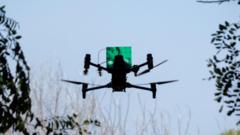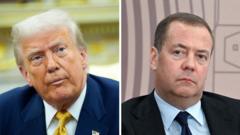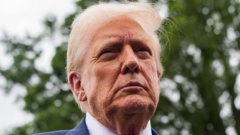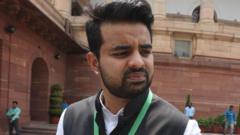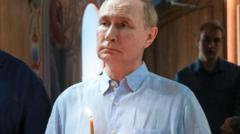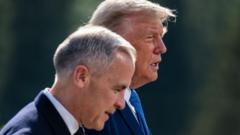This week marked a pivotal moment for President Trump as he aggressively shifted U.S. foreign policy strategies, pursuing a whirlwind of diplomatic initiatives that signal potential changes in global alliances while raising questions about his administration's long-term vision.
Trump's Diplomatic Blitz: Navigating New Global Alliances and Challenges
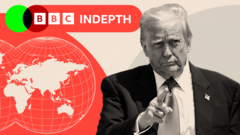
Trump's Diplomatic Blitz: Navigating New Global Alliances and Challenges
In a week of rapid-fire diplomacy, President Trump reshapes America's foreign relations amid conflicts and trade negotiations.
Amidst a cacophony of international dealings, U.S. President Donald Trump has transformed an ordinary week into a significant diplomatic spectacle, engaging with numerous global actors in a series of moves that blur traditional foreign policy lines. His administration took unprecedented steps — solidifying significant business agreements in the Gulf, lifting sanctions on Syria, facilitating the release of a prisoner held by Hamas, and negotiating peace talks between contentious rivals in South Asia. This barrage of activity left many allies and adversaries scrambled to adapt to the shifting landscape.
In a speech in Saudi Arabia, Trump touted a future reliant on "commerce not chaos," heralding an economic-focused approach to Middle Eastern relations, a marked departure from the previous interventionist models. He celebrated contracts touting over $600 billion in investments, framing them as achievements for American job creation, even amidst skepticism regarding their true value.
Absent from these discussions was a coherent strategy around pressing ideological issues such as climate change or human rights concerns, highlighting Trump’s inclination towards prioritizing business dealings over collective international governance. His remarks often targeted past U.S. foreign interventions, suggesting a pivot away from policies his administration deems ineffective.
Notably cautious on longstanding conflicts, the Trump White House initially refrained from intervening in the India-Pakistan standoff but eventually pressured both parties to reach a ceasefire. Diplomats were quick to note that claims of U.S. mediation in the ceasefire were overstated, as both nations were primarily responsible for the resolution.
In stark contrast to traditional diplomatic operations, Trump's direct decision-making style showcased his propensity for unilateralism in foreign policy, evident in his choices to engage directly with Syria's new leadership and to negotiate trade terms with China after an initial hardline stance. This tendency has raised eyebrows within the State Department, prompting concerns over impulsive policymaking detached from broader governmental input.
Meanwhile, international dynamics surrounding Ukraine have remained fluid, with Trump oscillating on U.S. strategies. A recent call amongst European leaders pushed for a ceasefire with Russia, yet Trump's immediate pivot towards advocating direct talks between Ukraine and Russia cast doubt on a coherent strategy and left diplomats pondering his motivations.
Attempts to broker peace in Yemen and negotiate with Iran hinted at a newfound diplomatic bravado, even while alienating key allies like Israel, whose leaders have felt sidelined by Trump's recent engagements.
In culmination, while this week's diplomatic activities suggest a detour into a mercantilist ideology prioritizing trade over intervention, the broader geopolitical crises remain largely unresolved. The shifting policies signal Trump's urgency to consolidate his diplomatic footprint ahead of subsequent challenges, particularly the looming tensions with China.
The week’s fervent diplomacy certainly showcased a torrent of action, but as history often reminds us, the implications of such moves may take time to materialize, leaving the world cautiously awaiting the next chapter in U.S. foreign relations.





